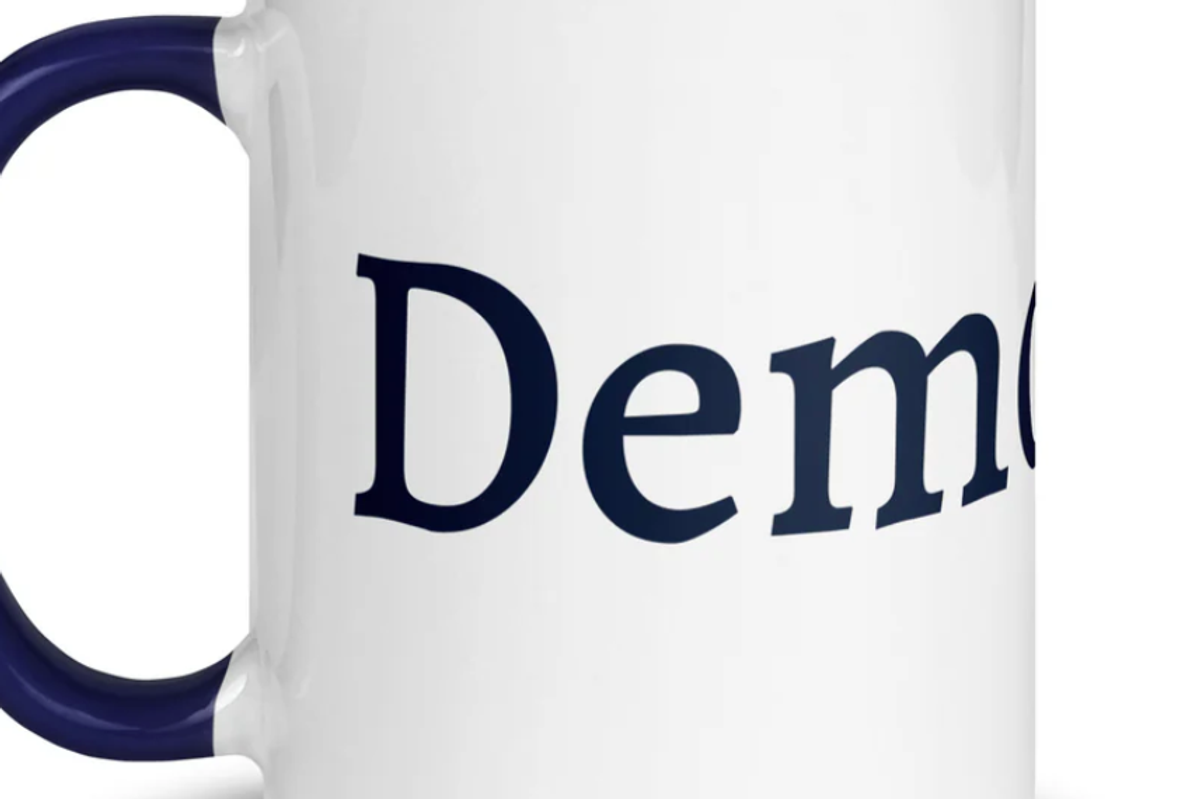At the 2012 Democratic National Convention, Bill Clinton had some good news for his fellow Democrats.
“You see, we believe that ‘we’re all in this together’ is a far better philosophy than ‘you’re on your own.’ It is. So who’s right?” he asked the crowd. “Well, since 1961, for 52 years now, the Republicans have held the White House 28 years, the Democrats, 24. In those 52 years, our private economy has produced 66 million private sector jobs.
“So what’s the job score? Republicans, 24 million; Democrats, 42 [million],” said Clinton, to a roar of cheers and applause.
Since September of 2012, more than 6.5 million more new jobs have been created, according to the Bureau of Labor Statistics. And in 2014, we had the best year of job creation this century –which meant more net jobs had been created under President Obama in 6 years than in 12 years of two president Bushes.
Still, Democrats apparently need to be reminded that their policies work better.
“We’ve seen 11 million jobs created, best job growth since the ’90s, best job growth in manufacturing since the ’90s; steepest drop in the unemployment rate in 30 years; deficit cut by two-thirds; over 10 million people with health insurance that didn’t have it before,” President Obama reminded Democrats at the House Democratic Issues Conference in January. He summed up the successes: “There is no economic metric by which we are not better off than when I took office.”
He credited these steady improvements to what he has been calling “middle-class economics.” Noting that liberal economic policies work, he added, “That’s been the history of this country.”
But who is going to trust Democratic presidents when it comes to assessing the success of Democratic presidents?
Sean McElwee, a research associate at Demos, has looked at the studies that have compared the records of recent presidents from both parties and summed up some of the findings in a recent post for Al Jazeera America. And what he’s found echoes the message Clinton and Obama gave to their fellow Democrats.
Here are five ways Democrats in the White House make America better.
1. Everyone does better under Democrats.
No matter who you are — white, black, Asian, Latino, rich, poor — you do better under Democrats, according to political scientists Zoltan Hajnal and Jeremy Horowitz. Wages grow more and poverty goes down more, along with the unemployment rate. Research from Princeton’s Larry Bartles finds that the gains for poorer Americans are specifically related to Democratic policies that favor the working class.
McElwee notes that while conservatives argue their policies encourage growth, they’re actually just shifting money to those who already have it:
“The evidence demonstrates that, on the contrary, Democrats make the pie bigger for everyone, while Republicans redistribute income toward the rich and whites,” he writes, citing a study by political scientist Nathan Kelly. When Republicans argue for lower taxes and regulation, all they are advocating is spreading more wealth to the wealthy, at the expense of the larger economy. They are the true redistributionists — in a regressive direction.
2. Minorities — especially — prosper when a Democrat is in the White House.
Republicans need to win a larger share of the minority vote in order to win the presidency but McElwee says they’ll only succeed “if voters remain unaware of their actual record.”
In their study “Racial Winners and Losers in American Party Politics,” Hajnal and Horowitz came to a straightforward conclusion. “Put simply: However measured, blacks made consistent gains under Democratic presidents and suffered regular losses under Republicans,” the authors found — and based on more limited data, those findings are also true for Latinos and Asians.
When a Democratic president has to deal with a Republican-dominated Congress, the benefits for blacks — and likely other minority groups — decrease.
3. Democrats are more fiscally responsible than Republicans.
The only way to shrink the deficit is to grow the economy — and because Democratic presidents are better at that, they’re also better at balancing the budget.
“In a study published last July, Princeton economists Alan Blinder and Mark Watson found that from 1947 to 2013, gross domestic product, employment, corporate profits and productivity grew faster under Democrats than Republicans,” McElwee writes. “The authors also noted that unemployment and deficits shrank and the economy climbed out of recession in less time under Democrats.”
McElwee also credits Democratic policies with creating superior “market conditioning.” Because Democrats prosecute wage theft, support unions, encourage reproductive rights, and provide a safety net that encourages entrepreneurship, incomes rise. The trickle-up policies pursued by the right, however, dampen the economy and hurt growth.
And that’s not a Democratic president saying that. It’s Standard & Poor’s Financial Services and the S&P stock index.
4. Democrats get “lucky.”
This is where you scream, “Correlation doesn’t equal causation.” Sure, we have lots of data that show everyone does better when a Republican isn’t in the White House, but how do we know the economy isn’t improving just at the mere wish that Reagan will be reincarnated?
Blinder and Watson are careful to note that about “half these benefits [are owed] to productivity shocks, consumer expectations, and favorable economic conditions.” They don’t want to fully credit Democrats, despite the evidence that a shift to conservative policies that “immiserate the population” have led to a 40-year slump for workers.
The middle class is still suffering, especially compared to the halcyon days of the mid-20th century, when workers’ share of income was actually growing faster than the share of the super rich. And for this reason, liberals tend not to want to trumpet their own successes, knowing there are many miles to go before we begin to reverse the damage done to the economy by right-wing policies.
But this modesty could cost Democrats the White House.
“If liberals are those who can marshal an impressive amount of evidence for their case and refuse to deploy it, then Alan Blinder and Mark Watson are most certainly liberals,” McElwee told me.
He notes that Republicans’ belligerent foreign policy and lack of support for education are variables that need to be factored in. “Consumer confidence is stronger under Democrats, this makes sense, as a recent cross-national study indicates that left-leaning parties are very good for firm growth [Blinder and Watson find that the stock market grows faster under Democrats]. There are therefore plausible reasons to believe that what Blinder and Watson consider ‘random’ [variables] are not [random].”
5. The Republican Party is a “patronage machine” for whites and the 1 percent.
In the aftermath of the civil rights movement, conservatives recognized that a “color-blind” society required more subtle forms of worrying about the plight of the white majority. The reborn far right had been trounced under Barry Goldwater’s opposition to the Civil Rights Act. But Richard Nixon’s more subtle “Southern Strategy” pulled in many former Democrats who had supported segregation. And the movement became increasingly conservative throughout the 70s, as big business united with religious right-wingers, in pursuit of their shared goals of cutting taxes and taking over the Supreme Court.
Despite anti-“taker” rhetoric, Republicans love government benefits. Their favored benefits — tax breaks for the wealthy, the mortgage interest tax deduction, and subsidies to help rich people buy health insurance — just happen to benefit whites disproportionately.
And even though white people do better under Democratic presidents, McElwee suggests they may prefer Republican policies due to a phenomenon known as “last-place aversion.”
“Among white voters, racial bias is strongly correlated with lower support of redistributive programs,” McElwee writes. “For example, research shows that opposition to welfare is driven by racial anger. Approximately half of the difference between social spending in the U.S. and Europe can be explained by racial animosity.”
Racial bias may explain why so many Americans are willing to vote against their own interests.
Regardless, Democrats have failed to make the case to the white and rural voters who show up in midterm elections that they don’t benefit by voting Republican. Policies such as paid sick leave, free community college, and universal pre-K help make these contrasts more vivid. But the Democrats must start making the case now — as we face an election that will determine the makeup of the Supreme Court for a generation — that Democrats have proven they’re consistently, historically, reliably better for America.
Photo: President Obama waves from Air Force One as he leaves Miami after a town hall meeting on immigration at Florida International University in Hialeah, FL, on Wednesday, Feb. 25, 2015. (Pool photo by Pedro Portal/Miami Herald/TNS)












